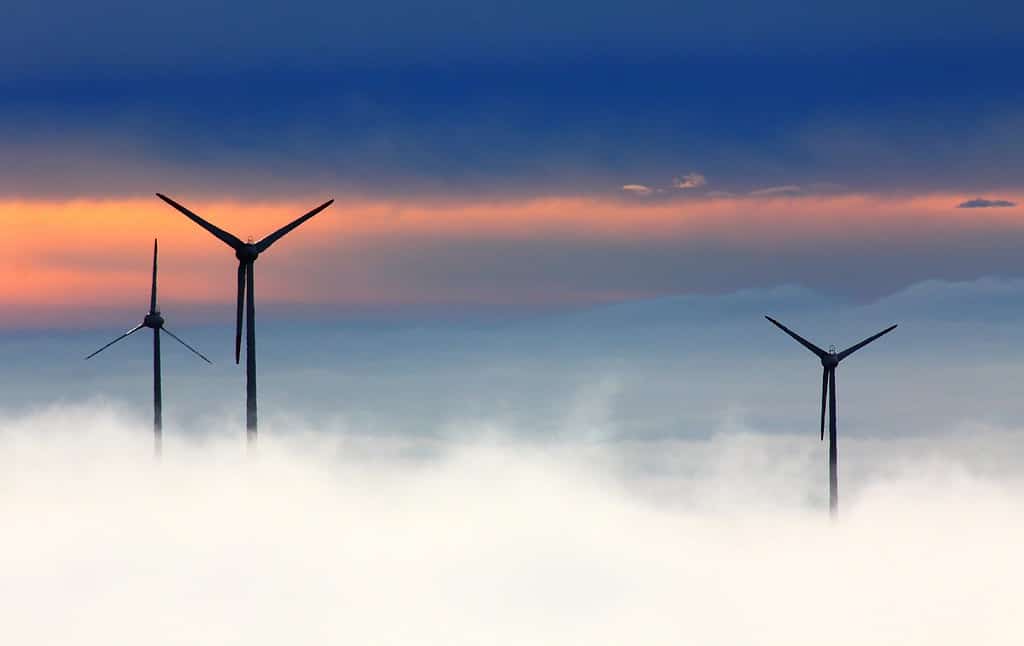
The year 2022 was great for green energy, particularly solar and wind power, and the trend is not slowing down. With prices per watt continuing to decrease and the rise in electricity and gas prices, the appeal for businesses to pursue green energy is increasing year after year. Last year, solar and wind power contributed to a record 12% of the world’s power supply, which is a great achievement.
However, as more and more individual households and businesses opt for green energy, a new challenge arises — grid capacity.
The challenge of grid capacity refers to when the power grid is unable to handle the peak supply times during the day, resulting in wasted power output. This could create a massive opportunity cost, which is why it is important to work smarter, not harder, with green energy.
The Challenge: Grid Capacity
Unlike water supply, electrical power acts more as a “use it or lose it” utility. Most areas do not have energy storage facilities like Australia’s massive Victoria Big Battery, which is capable of supplying 650,000 homes for an hour.
In most situations, electricity is generated and sent out through the grid to meet the demand at that moment. Power plants have become adept at understanding the ups and downs in demand over the course of a daily cycle, weekly cycle, and even the variation that happens during the year. However, with green energy such as solar and wind, we do not have a fine control over the supply of energy as we do with fossil fuel and nuclear power plants, which creates a key challenge.
Currently, more and more of the world’s power is generated through solar and wind energy, which is a significant improvement, but one that increasingly challenges energy grids. While it is possible to create massive battery storage centers to capture excess supply and send it back to the grid when it is needed, battery banks large enough to handle the net excess of a fully green energy grid would be extremely expensive, both in terms of cost and environmental impact.
The production of batteries requires the extraction and processing of raw materials, such as lithium, cobalt, and nickel, which are used in battery cells. Mining and refining these materials can create toxic waste, and mining activities can also contribute to deforestation and habitat destruction.
Another issue is the carbon footprint of battery production. Manufacturing batteries requires large amounts of energy — and if that energy comes from fossil fuels, the manufacturing process will release greenhouse gases into the atmosphere.
Finally, the disposal of batteries is a problem. Batteries contain toxic chemicals that can leach into the environment if not disposed of properly. Currently, only a small percentage of batteries are recycled, and many end up in landfills or incinerators, where they can cause pollution.
It would be counterproductive to hurt the environment through battery manufacturing for green energy storage after finally weaning off fossil fuels. So what can we do?
Alternatives to batteries for storing renewable energy
Some of the ill effects of battery production are inevitable since the damage to the environment is still less intense than using fossil fuels, so in many cases, we don’t have any better option at the moment.
However, that doesn’t mean we can’t optimize renewable energy storage by using less carbon-intensive alternative renewable energy storage systems wherever possible.
Vehicle-to-grid storage
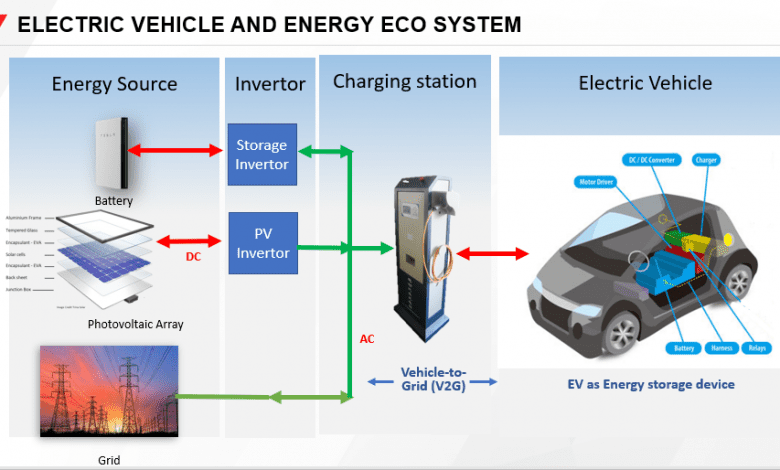
Experts have been working on solutions for this challenge for some time. One such solution is to use electric cars plugged into the grid as a potential storage for power — known as vehicle-to-grid (V2G) technology — during times when supply exceeds demand. An incentive program would be used when the grid requires some of that power back, meaning the grid would drain EV batteries during high demand. This is an interesting concept but not without its challenges.
Compressed Air/Gas Storage
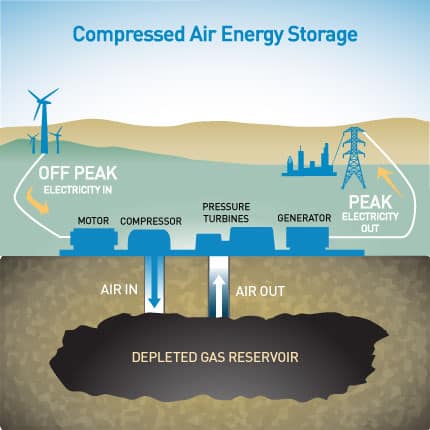
Compressed air/gas storage is a technology that has been used for many years to store energy. The principle behind it is simple: energy is stored in the form of compressed air or gas in a container, which is then released to generate electricity. Compressed air/gas storage is an attractive option for energy storage because it is relatively cheap and can be used on a large scale.
One example of compressed air/gas storage is the CAES (compressed air energy storage) system. The CAES system compresses air into a storage container, which is then released to turn a turbine and generate electricity. This technology has been used in several large-scale energy storage projects, including the McIntosh power plant in Alabama, which has a storage capacity of 110 MW.
Pumped Hydro Storage
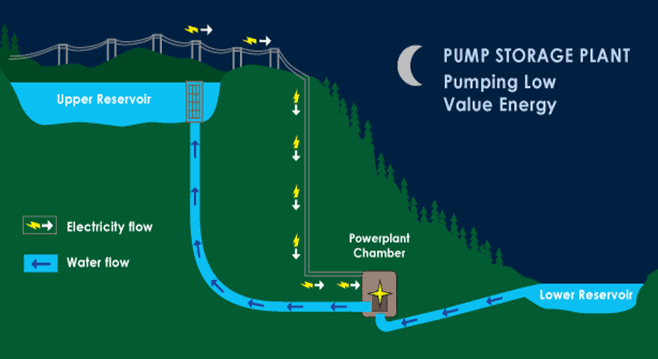
Pumped hydro is another energy storage technology that has been used for many years. It involves pumping water from a lower reservoir to a higher reservoir when there is an excess of electricity, and then releasing the water back to the lower reservoir to generate electricity when there is a shortage.
Pumped hydro is an attractive option for energy storage because it is highly efficient and can be used on a large scale. In fact, pumped hydro accounts for more than 90% of the world’s energy storage capacity.
One example of pumped hydro is the Bath County Pumped Storage Station in Virginia, which has a capacity of 3,003 MW and is the largest pumped storage facility in the world.
Thermal Energy Storage
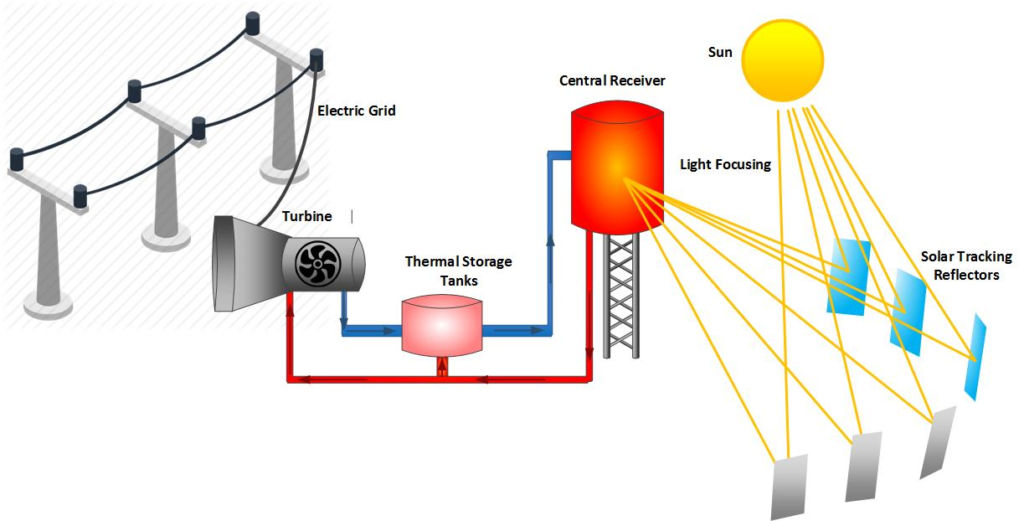
Thermal energy storage is a technology that involves storing heat in a material such as molten salt or concrete, which is then used to generate electricity when needed. This technology is particularly useful for solar power plants, which can store the heat generated by the sun during the day and use it to generate electricity at night.
Thermal energy storage is an attractive option for energy storage because it is relatively cheap and can be used on a large scale. One example of thermal energy storage is the Gemasolar power plant in Spain, which uses molten salt to store heat and has a capacity of 19.9 MW.
Gravity Energy Storage
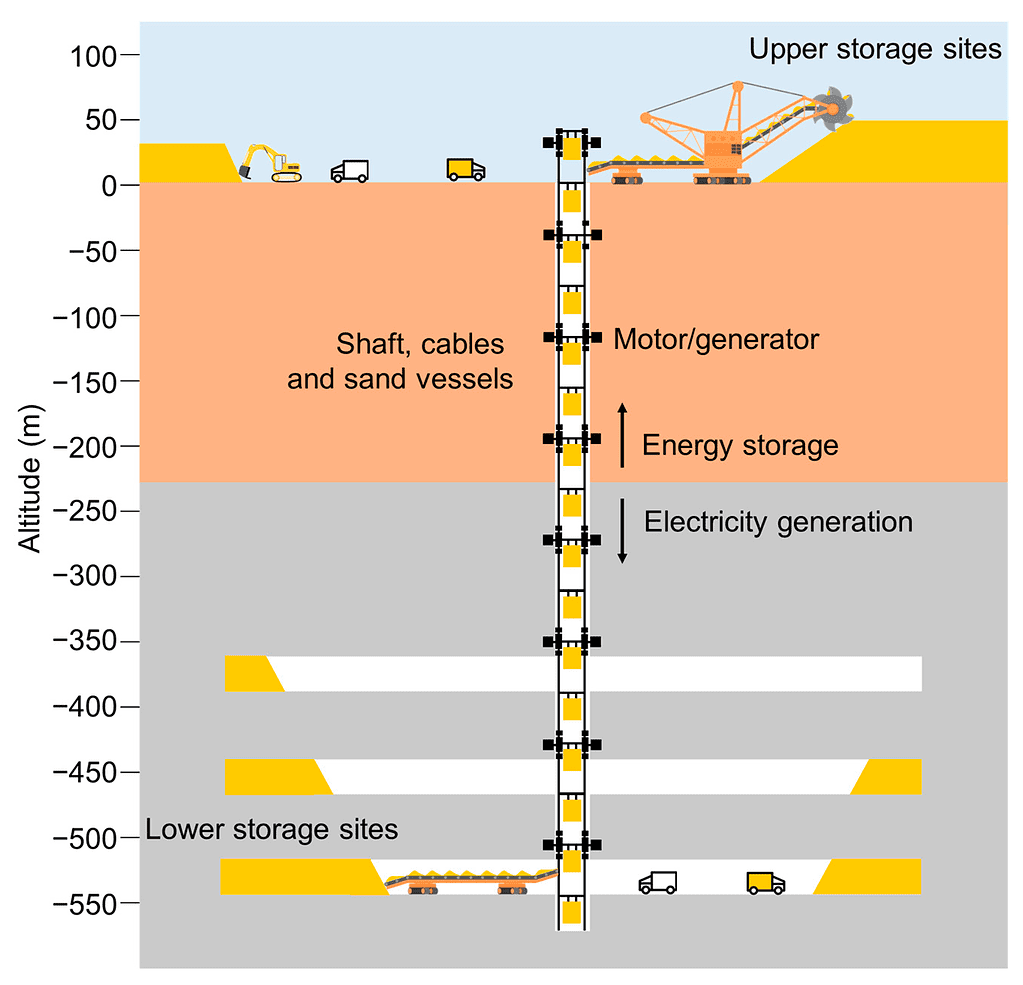
Gravity storage is a technology that involves storing energy by lifting a heavy object, such as a large weight or a block of concrete, to a higher level. The potential energy of the object is then converted into electricity when it is lowered back to its original position.
Gravity storage is an attractive option for energy storage because it is relatively cheap and can be used on a small scale. However, it is not suitable for large-scale energy storage because it requires a lot of space and is not very efficient.
One example of gravity storage is the Gravitricity system, which uses weights suspended in old mine shafts to store energy. The system has a capacity of up to 50 MW and can respond to changes in demand within a fraction of a second.
Min-Maxing energy storage
The grid capacity challenge can also be addressed through advanced optimization tools that can help both utilities and consumers squeeze the most out of their energy.
While we cannot control the weather, we have made significant progress in predicting it. Many available tools can provide rich historical data and accurate predictions for hyper-local weather.
There are weather intelligence companies that offer a customizable historical weather data API. This is critical for two reasons. First, businesses with high power demand processes could feasibly time these to better match higher sun and wind periods during the day, thus matching up supply and demand. Second, with API tools, a business could automate its scheduling process each day by matching up the predicted power supply for a given day, the total power demand for that day, and the best time to schedule high-power demand processes.
Technology to the Rescue
While batteries are the most commonly used technology for energy storage, there are several other alternatives that are worth exploring. Each technology has its own strengths and weaknesses, and the optimal solution will depend on factors such as the size of the energy system, the amount of energy that needs to be stored, and the cost and availability of different storage options.






